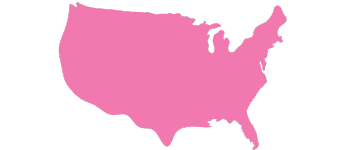Exclusive Breastfeeding
Exclusive Breastfeeding
Data highlight
Minnesota has the highest rate of infants exclusively breastfed for six months at 36.5 percent. West Virginia had the lowest at 13.8 percent. In 2019, Oklahoma, at 23.2 percent, ranked 38 out of 50 states.
HOW WE STACK UP
Percentage of infants exclusive breastfeeding through 6 months.


YOU MIGHT ALSO LIKE
Definition
Exclusive breastfeeding refers to the practice of feeding a baby only breast milk, without the introduction of any other liquids or solids. This means that the infant receives only breast milk from their mother or a donor, and no other food or drink, including water, formula, or other supplements.
Why we care:
Exclusive breastfeeding (EBF) leads to healthier babies and mothers. EBF, or breastmilk only nutrition for the first six months of an infant’s life, is recommended by major health organizations worldwide along with continued breastfeeding up to 1-2 years.,
Exclusive breastfeeding (EBF) leads to healthier babies and mothers. For the best health outcomes, the American Academy of Pediatrics (AAP) recommends exclusive breastfeeding for approximately 6 months followed by continued breastfeeding with complementary foods for at least 2 years and beyond as mutually desired.
Studies show numerous benefits to EBF, including reducing the risk of diabetes and obesity in mothers and children, two leading chronic health concerns in Oklahoma. It has also been shown in babies to reduce the risk of sudden infant death syndrome (SIDS), childhood cancers, and common illnesses like ear, respiratory and gastrointestinal infections.
Nationally in 2019, 45.3% infants were exclusively breastfed through three months; Oklahoma was close to the national average up to three months at 43.1%. This rate drops to 23.2 percent for babies in Oklahoma at 6 months of age.
Increasing breastfeeding rates is a major objective of the Oklahoma State Department of Health as part of their efforts to reduce Oklahoma’s tragically high infant mortality rate. If 80% of Oklahoma infants were exclusively breastfed for the first six months, it would save 30 maternal and nine child lives each year.
In addition, it would save over $33 million in annual medical costs. Education and support, including in-person care, is a key metric that the U.S. has performed well in. The reduction of the practice may be felt in coming years.
Considerations
Because of the pandemic, 17.9% of hospitals reported that in-person lactation support decreased and 72.9% reported discharging mothers and their babies less than 48 hours after birth.
The CDC 2022 Breastfeeding Report Card reflects breastfeeding and supplementation rates among babies born in 2019. These data were collected across 2020–2021 when babies were 19 to 35 months old and might partially reflect breastfeeding duration and exclusivity during the COVID-19 pandemic.
What we can do:
- Encourage birthing hospitals to become certified through the Baby-friendly Hospital Initiative (BFHI), a global effort launched by WHO and UNICEF to implement practices that protect, promote and support breastfeeding
- Adopt legislation like SB469 (2021) that would make breastmilk more available to women who have difficulty lactating
- Encourage companies and schools to become an Oklahoma Recognized Breastfeeding Friendly Worksite
- Adopt breastfeeding friendly policies that give families more workplace support and access to human milk
- Support the expansion of paid family and medical leave
- Provide resources and tools for early childhood education centers to best support breastfeeding families
This issue brief was written by Metriarch staff as part of our Data Lookbook.
Suggested citation
Metriarch. “Maternal and Child Health,” Data Lookbook (2024). URL: metriarchok.org/exclusive-breastfeeding.
- Last updated January 20, 2024
Share this page:




